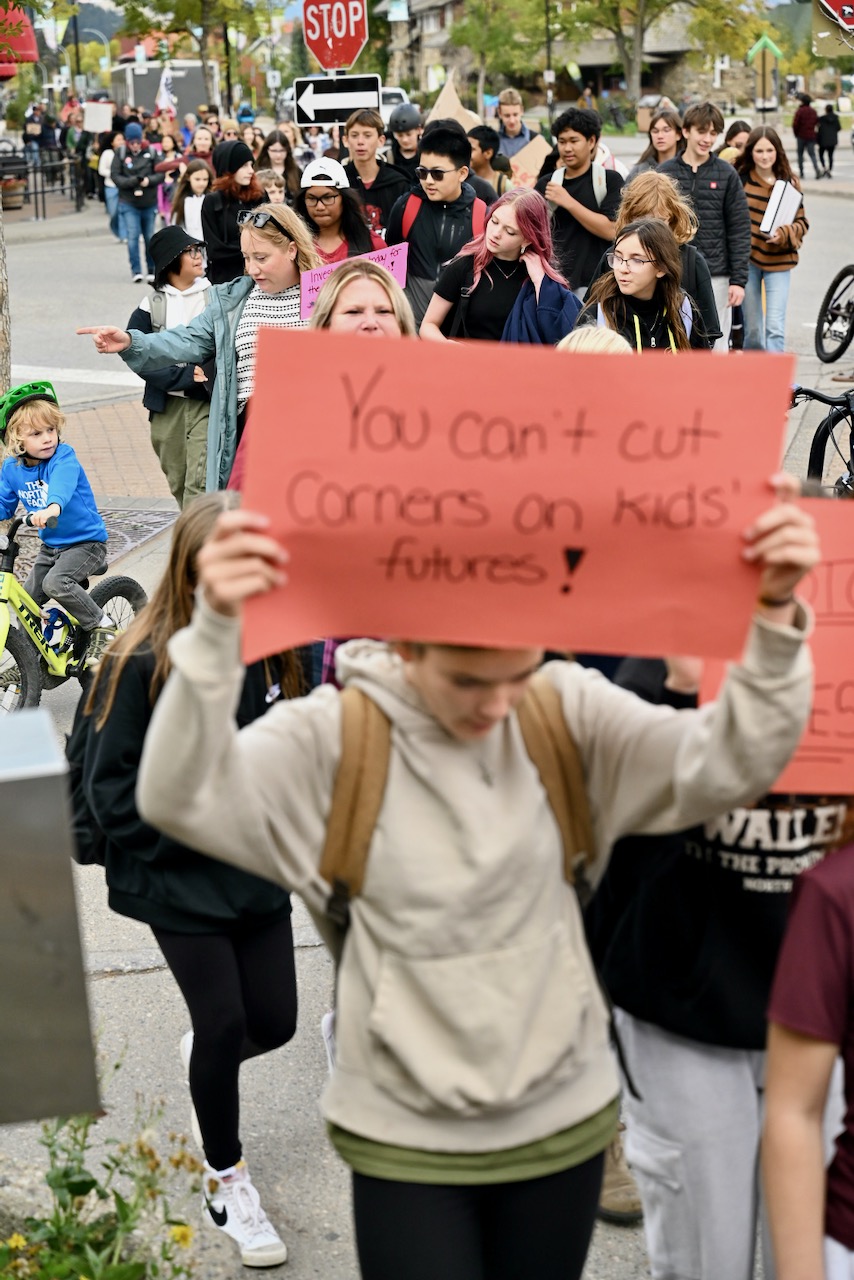The union representing striking teachers in Alberta say educators have tabled a reasonable offer to the province and that it’s now up to the Danielle Smith government to end the labour dispute.
“The responsibility to end this disruption lies squarely with the government,” Alberta Teachers Association president Jason Schilling said yesterday (Wednesday, October 15).
Schilling said at a press conference that the public understands teachers are standing up for Alberta’s students by demanding a fair deal.
“They know the issues are real and they know the solutions are long overdue,” Schilling said.
Recent polling at the Angus Reid Institute supports Schilling’s read on the public; their latest research says three-in-five (58%) Albertans are more sympathetic to the teachers than the government.
“The sympathy appears to come from agreement on two of the central sticking points in the ongoing negotiations: class sizes and teacher compensation,” the report says.
Schilling said the ATA’s bargaining committee put forward a balanced, solutions-focused proposal that included a phased-in approach to achieving management student-teacher ratios; a fair counter to the government’s three percent annual salary offer; and new language designed to “finally address the increasing complexity in today’s classrooms.”
Meanwhile, the province has said the ATA’s offer is a moon shot because it would require almost $2 billion more in spending than the government had set aside for a deal.
“The ATA and their members need to be prepared to come to a clear, concrete solution rooted in reality,” Finance Minister Nate Horner said in a statement to Global News.
Schilling took issue with that characterization.
“You want reality? We are working in schools on the front lines every single day dealing with the ramifications of the failure of this government to do right by the students of this province, their parents and the rest of Alberta. That’s the reality of what’s going on right now.”

The same day, Premier Danielle Smith responded to a question at a different media conference about her government dismissing classroom size caps in negotiations.
Smith said she wondered how the province would even enforce a classroom cap. The UCP government stopped tracking class sizes when it came to power in 2019. But other provinces are able to track student/teacher ratios.
Smith then demonstrated her calculation that the 740,000 students being taught by 35,162 teachers in Alberta classrooms comes out to a ratio of 21:1.
“We should already be able to have class sizes of 21,” she said. “Why don’t we?”
The reason, as teachers have pointed out, has to do with Alberta’s rural/urban spread, i.e., population distribution: although some classes in rural communities are small, the vast majority of Alberta’s population lives in Calgary and Edmonton and its those cities where class sizes are haemorrhaging.
“That’s why you can’t use province-wide averages to determine class sizes, you actually have to count the number of students in each class,” said Grande Prairie teacher Peter MacKay, who called Smith’s comments “unbelievably disingenuous” on social media.
Alberta’s 51,000 teachers have been on strike since October 6.
A Jasper rally held October 9 saw dozens of teachers and supporters wearing “Red for Ed.”

Jasper teacher Jo Nadeau has said Albertans should keep the bar for education high and expect their government to deliver quality public services in a competitive world.
“What’s at stake in these negotiations is far more than teachers’ salaries but the future quality of Alberta’s public education system and the ability of every student to become their best self if they are provided with the support and resources needed to do so,” Nadeau said.
Bob Covey // bob@thejasperlocal.com


